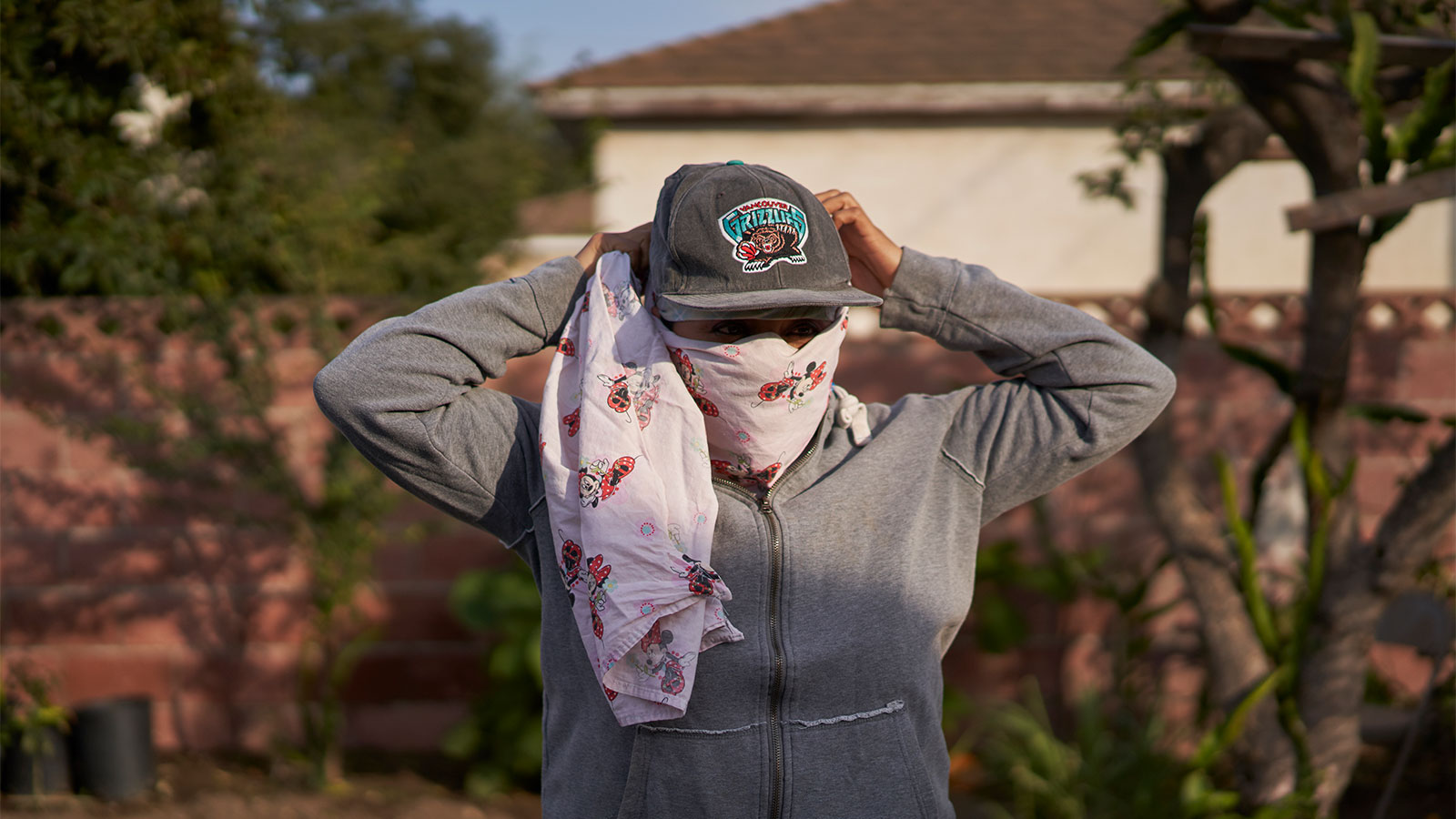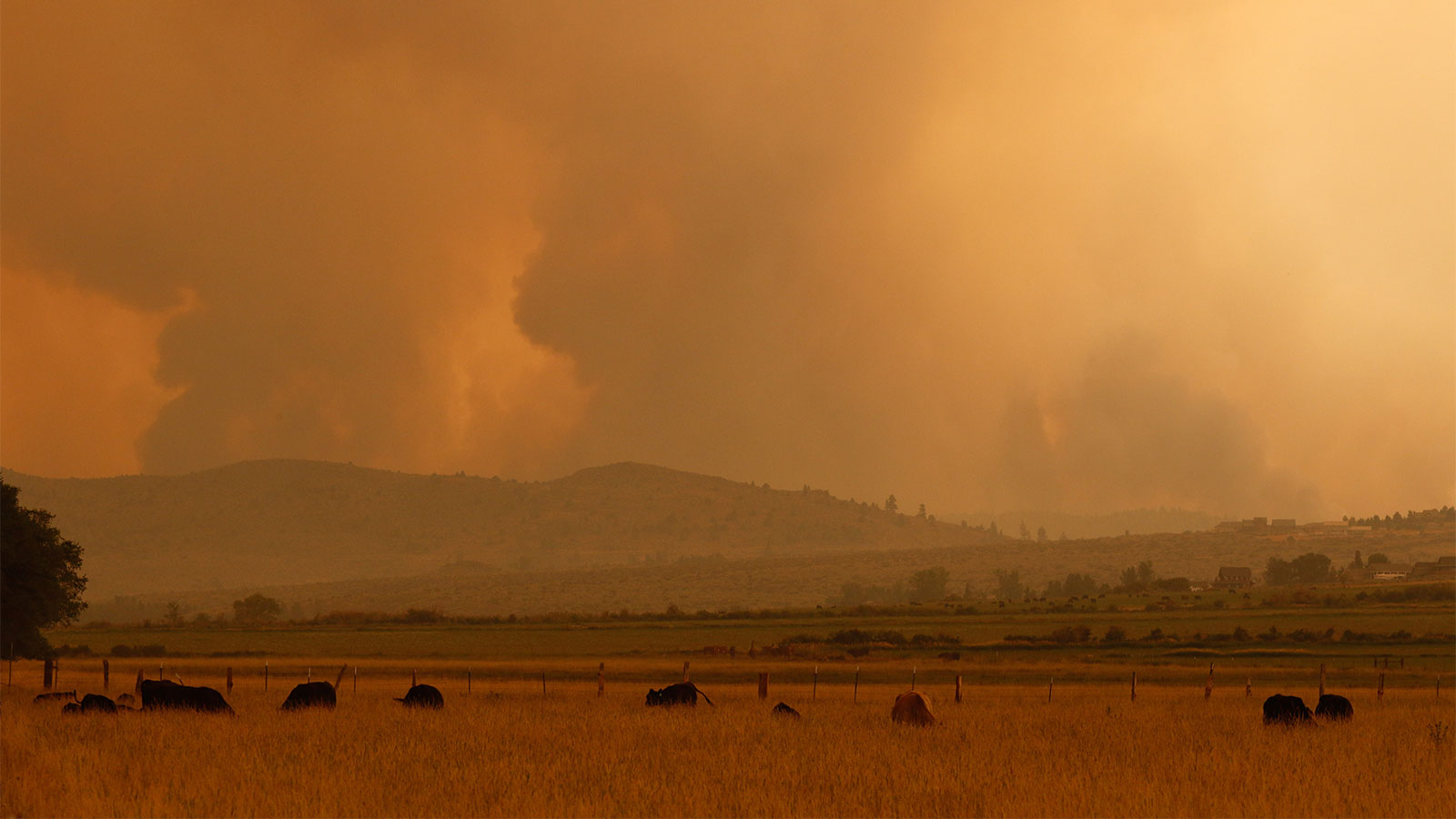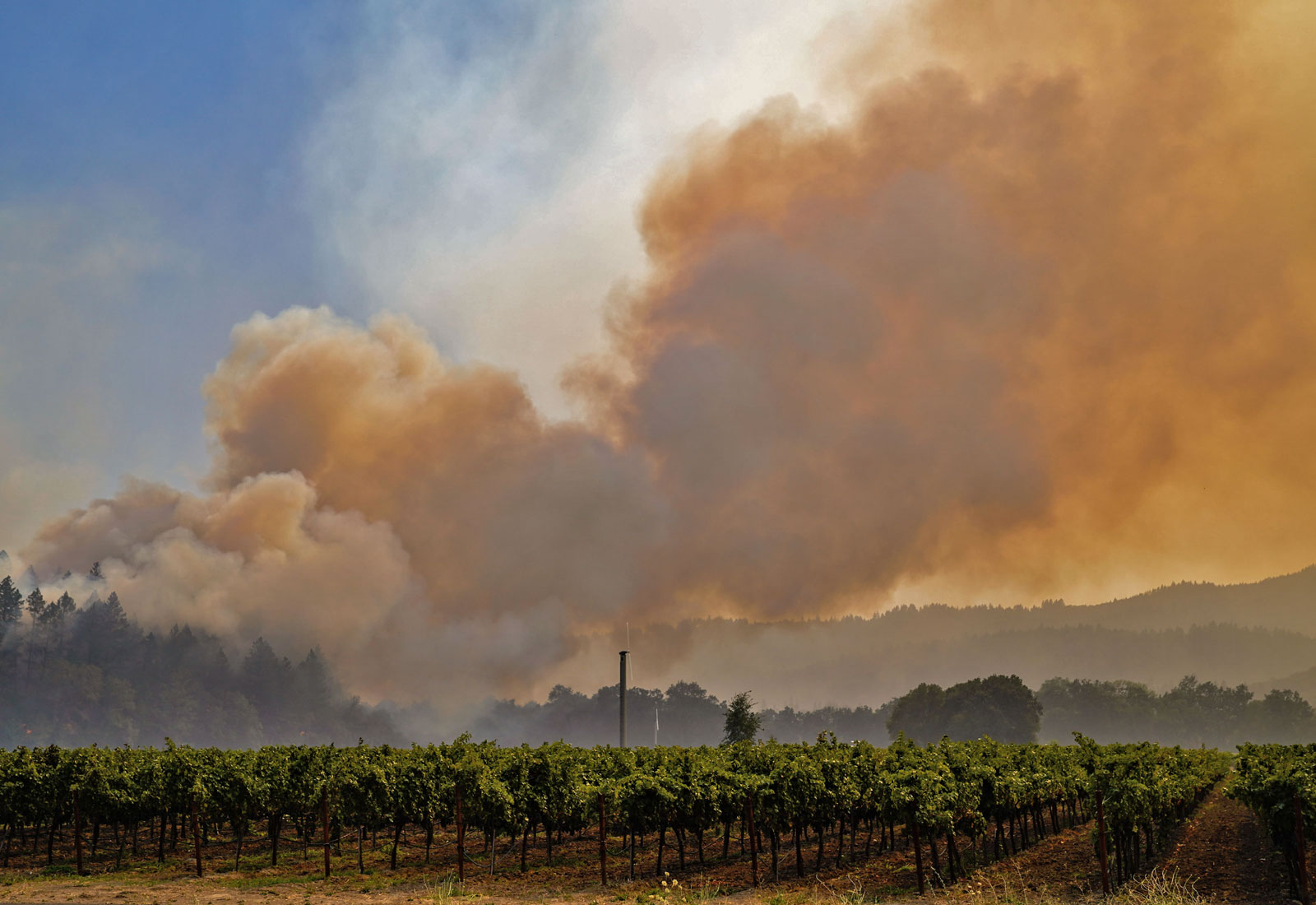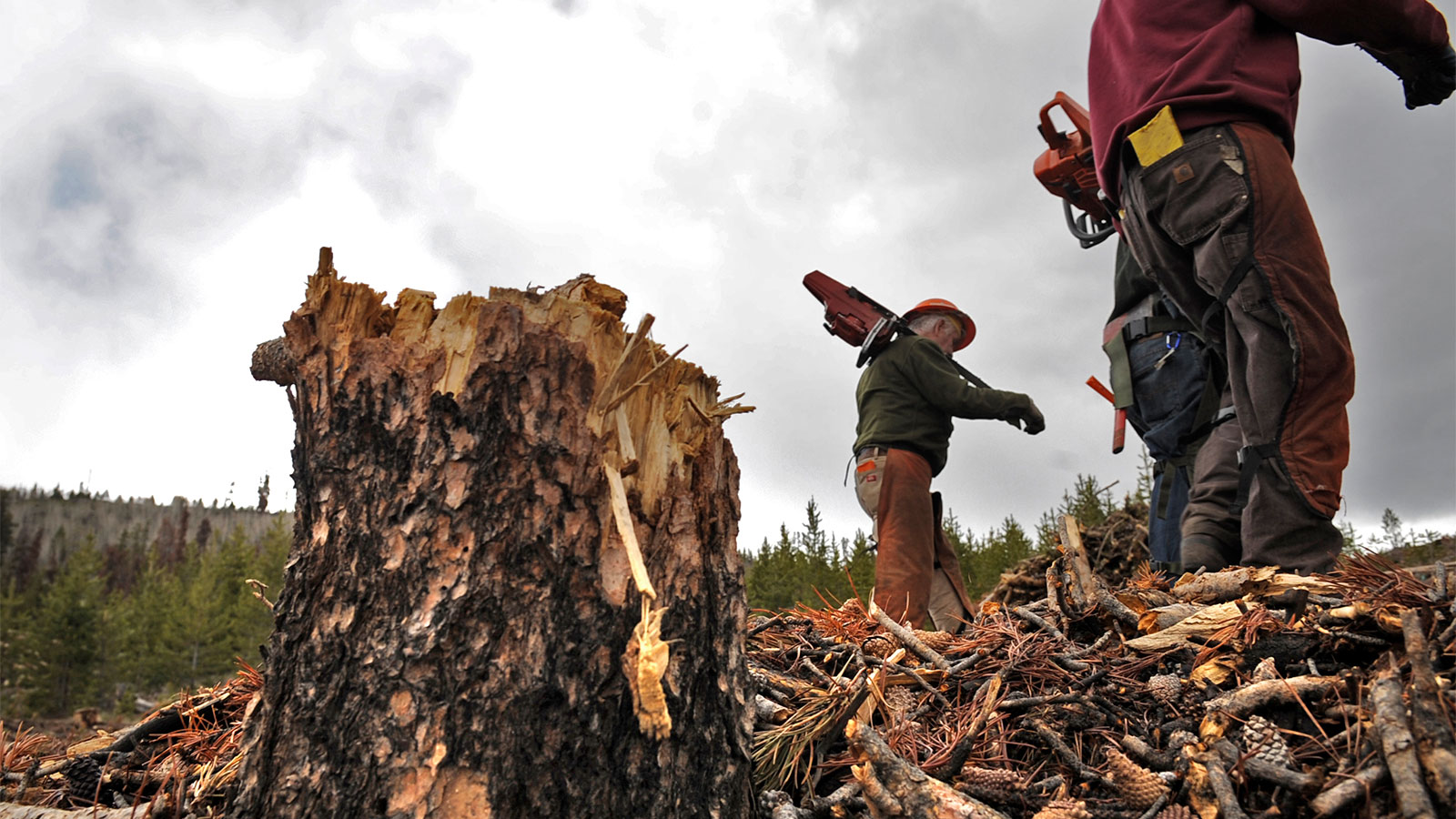Stu Smith got an email from his insurance company last summer with some bad news: His premium was more than quadrupling.
Smith is the co-owner of Smith Madrone, a wine operation in the mountains near California’s Napa Valley, and he had held a wildfire insurance policy with the company for more than 30 years. Now, though, the insurer had decided Smith’s property was too risky to keep on its customer rolls at anything close to its longtime price. If Smith wanted to renew his policy, he would have to pay annual premiums of more than $55,000, up from just $12,000 the year before.
The following week, as the LNU Lightning Complex Fire began to spread in the hills east of Napa Valley, Smith scrambled to find a new insurance company. No private insurer seemed willing to issue him a policy, so at the last moment, he resorted to a state-run insurance plan that covered a portion of his property. The price was still orders of magnitude greater than what he’d grown used to: He would now have to pay $46,000 for an insurance plan that offered a fraction of the coverage his previous plan did.*
After a few weeks, with the LNU fire still burning nearby, Smith gave in and signed up for the state-run plan, but many of his neighbors in Sonoma Valley did not. Hundreds of farm owners in California have found themselves forced to go without insurance coverage this past year, from ranchers along the Central Coast, nut growers outside San Diego, and winery owners like Smith in Sonoma and Napa Valley. Nobody knows for sure how many farm owners have lost coverage, but what’s clear is that the trend has sent shock waves through California’s agricultural regions.

Insurance companies in California have taken a staggering blow from wildfires — the industry’s losses in 2017 and 2018 eclipsed its total profits from the previous 25 years — and have started to drop customers by the thousands, leaving wineries and ranches unable to find insurance for properties worth millions of dollars. The state has stepped in to provide a short-term fire insurance solution of last resort, but the crisis foreshadows a larger confrontation over so-called managed retreat in one of the country’s all-important breadbaskets.
California plays a crucial role in the food economy, producing more than 80 percent of the country’s wine and more than 80 percent of fruits like strawberries and raspberries. If a lack of fire insurance helps usher these farmers out of business, the rest of the country might pay for it at the grocery store. The decline of a farming region like Napa would also create knock-on effects for the service-sector workers who support the agricultural economy, as well as the thousands of migrant workers who pick grapes during harvest season.
Brent Burchett, the head of the San Luis Obispo Farm Bureau on the state’s central coast, said that he’s not sure how much longer his members are going to hang on.
“I think it was serious already, and then the notion that they cannot get insurance is pushing them to say, ‘I’ve got to make a decision,’” said Burchett. “If you’re packing up and moving, I would say the threat of a fire is pretty much top of mind.”
This insurance dilemma has been simmering for decades. After a rash of wildfires and earthquakes in the 2000s, the largest private insurers became more conservative about writing new policies in fire-prone areas. It wasn’t until after the historic fire seasons of 2017 and 2018, though, that regulators began to notice a rise in so-called “nonrenewals,” wherein a private insurer refuses to renew an existing customer’s insurance plan. An estimated 400,000 residential customers received nonrenewal notices in 2018 and 2019, with numbers spiking by more than 200 percent in the most vulnerable counties in California. Thousands of commercial businesses and farms have also been dropped.
Unable to secure insurance on the private market, thousands of households began turning to the California Fair Access to Insurance Requirements plan, known as FAIR, a state-run “insurer of last resort” that provides limited and expensive fire coverage. The program had been created in the 1960s after a series of brush fires, and was designed to provide only the most basic coverage, so it excluded a farmer’s agricultural buildings, tractors, and other equipment, which together could be worth hundreds of thousands of dollars.
When insurance started dropping customers a few years ago, this gap in the state plan left many farmers with no coverage options for much of their property — a potential death sentence for their business. Farms rely on bank loans for the capital they need to expand their operations, but they can’t get bank loans without insurance. Many farmers began to worry that banks would soon cut them off.
After a lobbying push by the largest trade association of California farmers, the California state legislature passed a bill earlier this month that expanded the FAIR Plan to cover farm structures, and Governor Gavin Newsom signed it a few days later. (The state insurers’ association also supported the bill.) The new insurance won’t be available until the end of the year, though, which means that many farmers will have to “go naked,” as Smith calls it, through a fire season that experts believe could be one of the worst in history.

The worst-case scenario here is as bad as can be imagined: If another wildfire like the LNU Lightning Complex strikes Smith’s part of Wine Country this summer, it could not only destroy outbuildings and drip irrigation equipment but contaminate all the local grapes with smoke as well, making them impossible to sell. Smith can count himself lucky. Because he’s enrolled in the FAIR Plan, he can expect a minimal payout if a fire destroys his operation, but some of his property is still de facto “naked.” For his neighbors, those who’ve gone without coverage altogether, any kind of fire damage would likely mean bankruptcy.
Even if farmers do make it to next year, the insurance problem isn’t going away any time soon. The FAIR plan’s coverage caps out at around $4 million, and many wineries and ranches are worth much more than that. It also doesn’t cover damage to crops (federal crop insurance typically doesn’t either). That can be painful for winery owners like Smith: The smoke from last season’s wildfires contaminated many grape vintages in Napa and Sonoma, rendering them unusable for wine.
To protect the long-term interests of California’s agriculture industry, the state government will have to cajole private insurers into offering coverage at something like the price and scale they used to, most likely by assuring them that property owners will take steps to reduce wildfire risk. The state could also try to funnel more rejected customers into the FAIR program, but that would create an ultra-expensive risk pool that might prove unsustainable.
Smith, for one, is optimistic about getting private insurers to return to the Wine Country market. He has spent thousands of dollars to clear flammable forest vegetation and create “defensible space” to buffer against blazes. If a private insurer looked at his property rather than at his ZIP Code, he says, they’d be sure to offer him a better deal.
Others in Wine Country are less optimistic about the future of the industry.
“If you’re repeatedly hit by wildfire and you’re not insured for it, then most likely you’re going out of business,” said Ryan Klobas, head of the Napa County Farm Bureau, which represents winery owners one valley over from Smith’s winery in Sonoma. Klobas estimates that around 85 percent of his 1,500 farm bureau members have received nonrenewal notices from insurers in the past few years.
Even if private insurers do offer coverage again, Klobas says, it’ll likely be too expensive for many small operations to afford — the few wineries that didn’t lose coverage last year saw their rates spike as much as fourfold overnight. “How do you keep funding an insurance policy where the rates have tripled or quadrupled?” he says. “That doesn’t make any sense. They’re essentially just sitting there waiting for something to happen, but [they] don’t have the resources to really deal with it.”
To understand why Klobas is worried, it helps to think about why an insurance company would drop customers in the first place. If an insurance company is paying out more money in claims than it is taking in from premiums, the logical solution is to raise premiums to cover the difference. When an insurance company drops thousands of customers, though, it is saying that it cannot raise prices high enough to turn a profit off those customers — saying, in other words, that their farms are impossible to insure.
“No group is working harder to understand fire risk and mitigation efficacy than insurers,” said Rex Frazier, president of the Personal Insurance Federation of California, in a statement to Grist. “I’m not aware of anyone that can credibly state they understand how to stop a large fire from taking homes and businesses.”
Climate change caused by the burning of fossil fuels has extended both the length of every fire season and its geographic range, which means that each year is likely to bring new destruction to a place that isn’t ready for it. If insurers continue to lose money, some companies might withdraw from parts of California altogether. Something similar happened in the Midwest almost a century ago when private flood insurers abandoned the region following the Great Mississippi Flood of 1927.
Frazier noted that given the scale of fire risk in California, simply raising premiums might not be enough to protect insurance companies from going out of business: “An insurer also has to guard against solvency issues from over-concentration to regional fire risk and avoid taking a disproportionate share of an individual fire’s damage,” he said.
For the past two years, California has issued one-year moratoria that prohibit insurers from dropping customers in areas that saw severe fire damage that year. This has slowed the pace of displacement for those in the highest-risk regions, but it has not slowed down the pace of nonrenewals in other areas, nor does it protect homeowners after the moratorium expires. This temporary solution has only delayed a reckoning that many states will have to face: California must decide whether it should continue issuing moratoria in disaster areas or let the market take its course.
“On the one hand, we might say that people who live in these wildfire risk zones absolutely should have insurance, it’s sort of a basic ability of them to have some resilience to stay where they are, so maybe governments should step in to subsidize or require insurance companies to make it available,” said Lisa Dale, a Columbia University professor who has studied the viability of managed retreat from fire zones. “On the other hand, we could say that if insurance companies [believe] that an area is too risky to insure, then we should allow the private marketplace to reflect that risk, [because] it’s providing incentives that lead us in the right direction.”
In other parts of the country, the growing threat of sea-level rise has spurred a conversation about “managed retreat,” the coordinated withdrawal from low-lying regions and other vulnerable areas. The insurance crisis could force a similar conversation in California as residents find themselves unable to secure sufficient coverage. If growers like Smith start to go under, it will not be easy to replace them.
*Correction: This story originally misstated the location of Smith Madrone.





